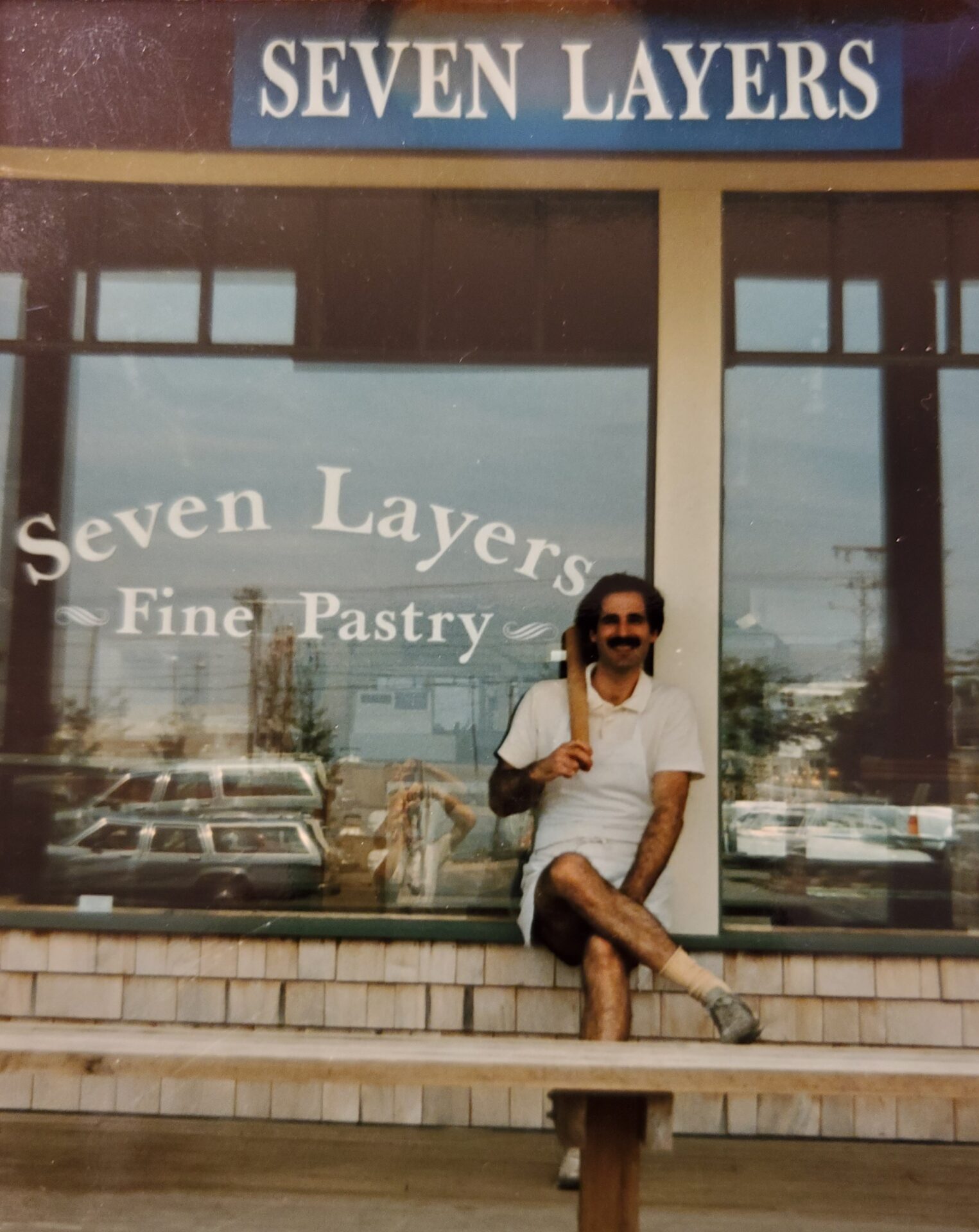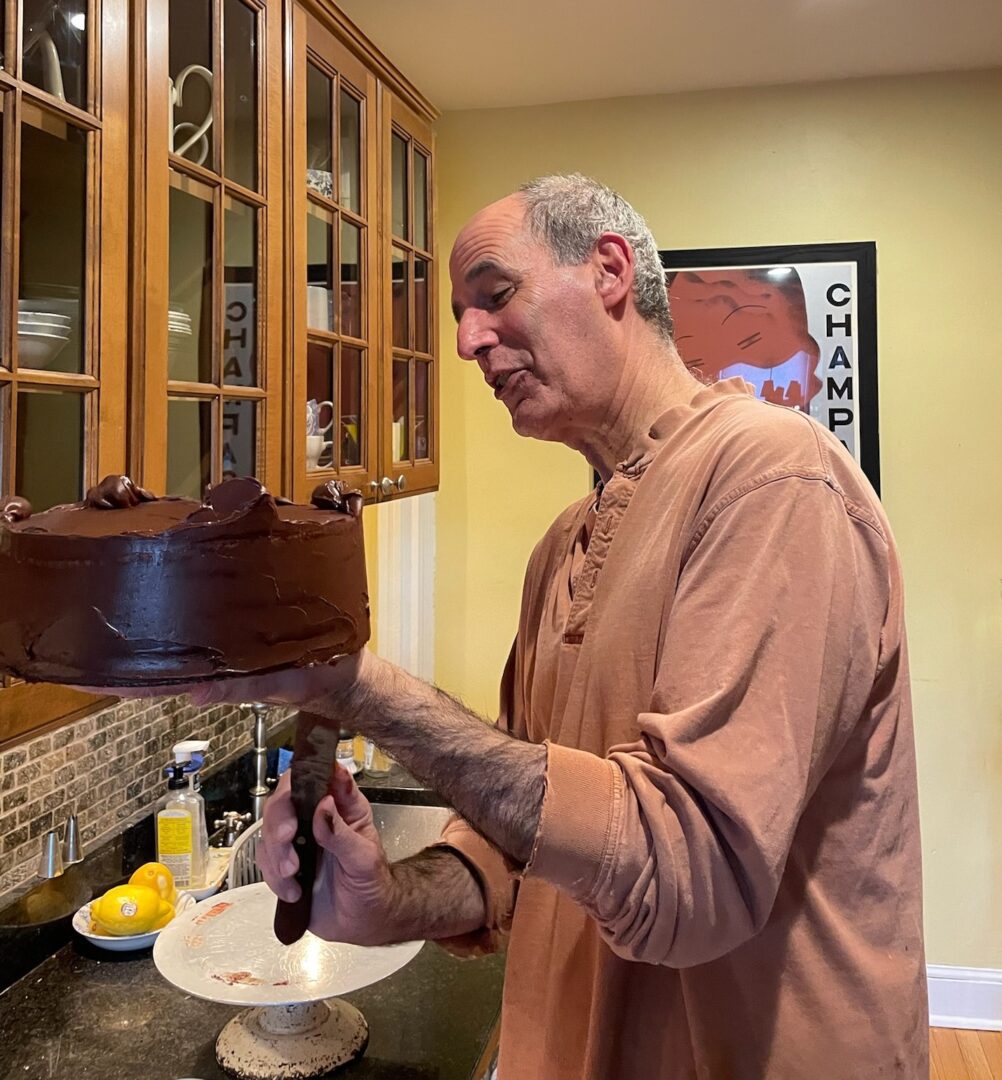About Ken Goldberg
Pastry Chef  Culinary Economics Analyst
Culinary Economics Analyst  Hospitality Education Author
Hospitality Education Author
After graduating with a degree in Economics from the University of Pennsylvania I entered the professional world as a research assistant at Mathematica Policy Research in Princeton NJ. Interesting work but after several years I decided to follow my heart to the foodservice industry which I had been exposed to during summer vacations. With the choice between culinary and pastry, my affinity for details, structure, and exactness, led me into the world of pastry.
I began with a position at a small patisserie in Philadelphia where I was first exposed to the rhythm of life in a pastry shop. Following a move to New York I was I was fortunate enough to work at some of the city’s premier culinary and pastry establishments. Patisserie Lanciani produced some truly unique cakes for its shop as well as high end retail food stores.
From there it was on to Glorious Food, where classic desserts such as baked Alaska, ice cream bombes, and praline soufflé were enclosed with Glorious' signature spun sugar for major New York social events. It was an education in high-quality, large scale dessert production as well as finishing on-site in makeshift “kitchens."
I continued in catering with Restaurant Associates, where I developed methods for producing and serving plated desserts, such as warm chocolate cake, for events of up to 900 guests.
With Sign of the Dove, I was part of an extremely talented team producing desserts inspired by the work of Chez Panisse pastry chefs. The Crème Brûlée tart with fresh berries was extraordinary as were with individual banana mousse cakes with chocolate glaze.

At Seven Layers, my own shop on Martha’s Vineyard I offered a range of delicacies rooted in both the European and American pastry traditions. The day started with numerous breakfast pastries –croissant, pain au chocolat, almond croissant, pain au raisin, brioche, muffins, and on weekends, cherry cheese kuchen.
Pastries such as fruit tarts, napoleons, éclairs, and cookies next started to fill the case. To ensure freshness, we only made enough to last that day, with any leftovers (rare) were brought home to share with neighbors. Fresh fruit pies were a second season addition and were an instant success.
Cakes in our repertoire included;Chocolate Rhapsody, Mozart Torte, Strawberry Layer Cake, Cheesecake, and Morello Cherry Torte.
Wedding cakes were constructed from a Reine de Saba or French Pound Cake, with a classic vanilla buttercream in basket weave design and fresh flowers.
Baking Philosophy
Early in my pastry career I learned that the quality of the ingredients matter, and this became a guiding principle. A chocolate gateau will taste sublime when made with quality chocolate. Pound cakes, cookies, breakfast pastries, puff pastry, depend on high quality butter. Good heavy cream will whip beautifully where others will turn watery. Fresh nuts deliver a taste and aroma that is truly unique. These ingredients, combined with good recipes, will ensure pure and memorable flavors.
When decorating whole and plated desserts my philosophy has been to keep it simple. A little dusting of confectioners’ sugar or cocoa, a bit of piped whipped cream, some pristine raspberries, a sprig of mint, add enough to help a dessert shine.

Management Tools and Writing

In the midst of all this wonderful baking, my interest and work in the economics of the culinary industry continues. With the continuing pandemic-related labor challenges facing all hospitality enterprises, in terms of availability and wage and retention pressures, I am currently working on studies that investigate and codify methodologies and systems to increase administrative and production staff (chefs, line cooks, ordering personnel) productivity. The results will be published on my consulting website www.culinaryeconometrics.com.
Another result of Coronavirus disruptions has been the streamlining by restaurants of their menus in response to worker shortages and ingredient cost increases. These are positive steps but to be truly effective, the restaurateur must make the correct decision on which menu items to keep and the pricing for those items. Several spreadsheets are currently under development that incorporate menu engineering, goal value analysis, and cost-based pricing formulas as tools in making those critical decisions. Elements of this work draws on materials developed during my years as an Adjunct Professor in Managerial Accounting.
In addition, I continue development of my SmartReads series available on the VitalSource eBook platform. To the existing library of; Introduction to the Restaurant Industry, Leadership in Foodservice, Recipe Fundamentals, and Recipe Costing, the following titles will be added by summer 2022:
- Introduction to Restaurant Economics
- Menu Pricing and Analysis
- Developing and Maintaining a Labor Efficient Restaurant
- Practical and Understandable Break-Even Analysis